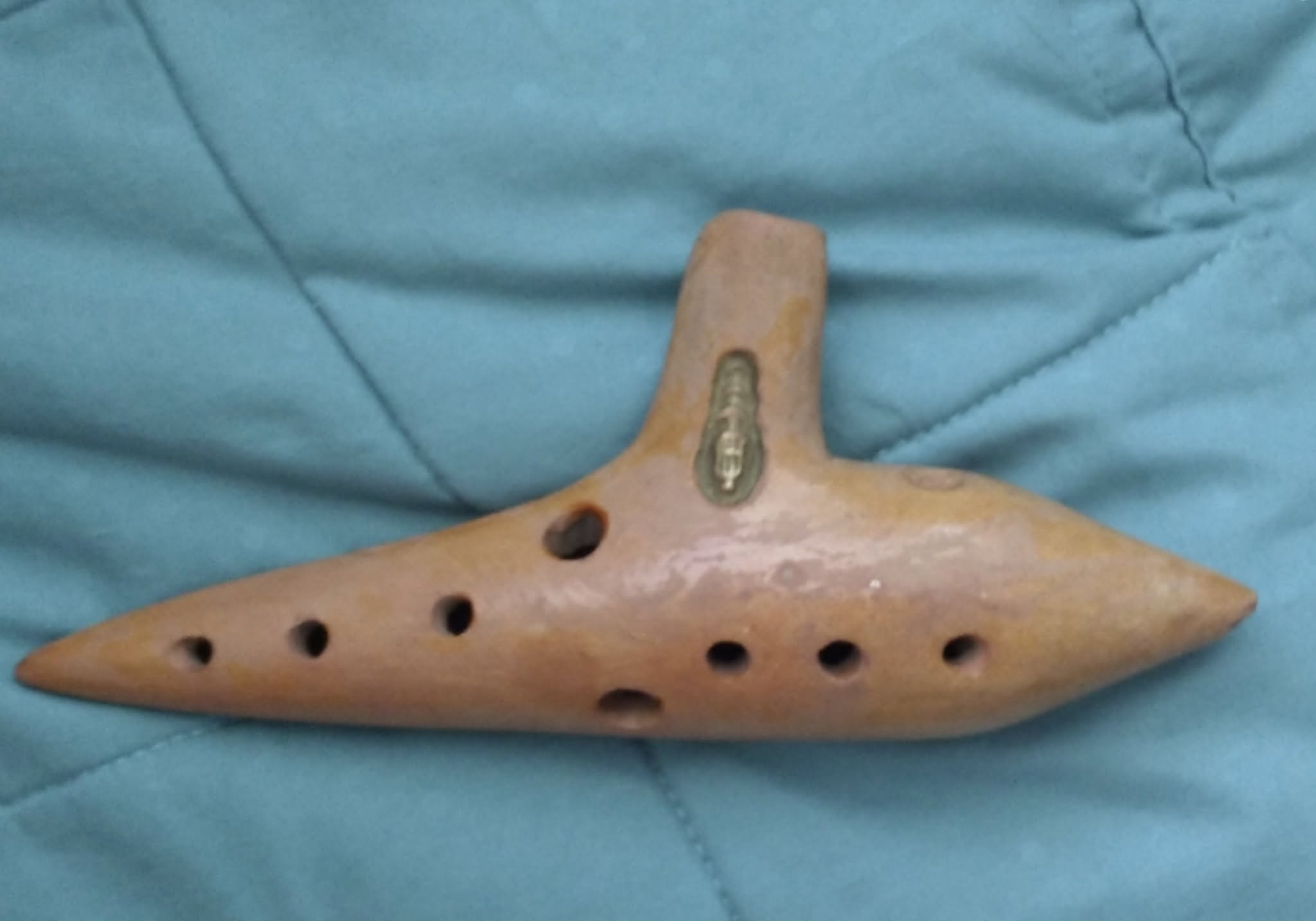I walked into a nearby thrift store without much expectation, just looking around and not really planning to buy anything. It was one of those casual trips where you never know what you’ll find, and most of the time, you leave empty-handed. But that day was different. As I made my way through shelves packed with forgotten trinkets, my eyes landed on something strange—a small object shaped like a submarine. Honestly, it looked like a cross between a whistle and a potato, and I couldn’t help but be intrigued.

I picked it up and flipped it over. That’s when I saw the inscription: “Ant. Canella Ferrara, Italy.” It was ceramic, clearly handmade, and had a beautiful glaze that hinted at some age and character. And the price? Just one dollar. Without hesitation, I bought it, having no idea at the time how special it really was. When I got home, I did some digging and discovered that I had stumbled upon an Antonio Canella ocarina, a handmade wind instrument from Ferrara, Italy. The ocarina is an ancient musical instrument found in various cultures throughout history—from China to Mesoamerica to Europe. The design most of us recognize today, the sweet-potato shape with finger holes, dates back to the mid-1800s and was created by Giuseppe Donati in Budrio, Italy. Ferrara, where my ocarina originated, became a key hub for ocarina production, and Antonio Canella is a name well-respected among collectors and musicians for continuing that rich tradition. His instruments are known for their unique sound and remarkable craftsmanship.
The ocarina I found is a ten-hole transverse model, ceramic, with a rich brown glaze and a subtle golden stamp near the mouthpiece. It has ten finger holes on top and a thumb hole underneath. When I held it, I could feel the weight and texture that comes with something handmade—it had that unmistakable artisanal quality that mass-produced items just don’t have. I gave it a try, and the sound that came out was haunting, airy, and beautifully ethereal. It wasn’t the sharp blast of a whistle or the clean notes of a flute—it was something entirely its own. Playing it felt like unlocking a sound from another time. As I continued researching, I was surprised to learn that Antonio Canella ocarinas can fetch a decent price. Depending on their condition and tuning, they typically sell for anywhere from $30 to $100, and some rare or pristine examples go for $120 or more.
Considering I had picked mine up for a single dollar, I couldn’t believe my luck. Despite a few imperfections, it was still in great shape and completely functional—both a musical instrument and a collectible item. One of the most special things about ocarinas is their sound. It’s soft, nostalgic, and dreamy—less formal than a flute and far less piercing than a recorder. It’s the kind of sound that feels like a warm memory or a gentle breeze. And surprisingly, it’s a real conversation starter. People see it and immediately want to know more—“Is that an ocarina?” or “Is that the instrument from Zelda?” It draws attention and curiosity, and it always makes for a fun chat.
So, should you buy one if you ever come across an ocarina, especially one stamped “Ant. Canella Ferrara, Italy”? Absolutely. Whether you’re a music enthusiast, a collector, or just someone who enjoys unique and meaningful items, owning an ocarina like this is well worth it. You can display it, play it, or treasure it as a little piece of history. That day at the thrift store reminded me that treasures can be hiding in the most unexpected places. You just have to keep your eyes open, flip things over, and be curious. That one-dollar find turned out to be a window into a world of music, tradition, and craftsmanship, and it’s now one of my favorite discoveries. Sometimes, the things we think are junk turn out to be gems—we just have to look a little closer.





